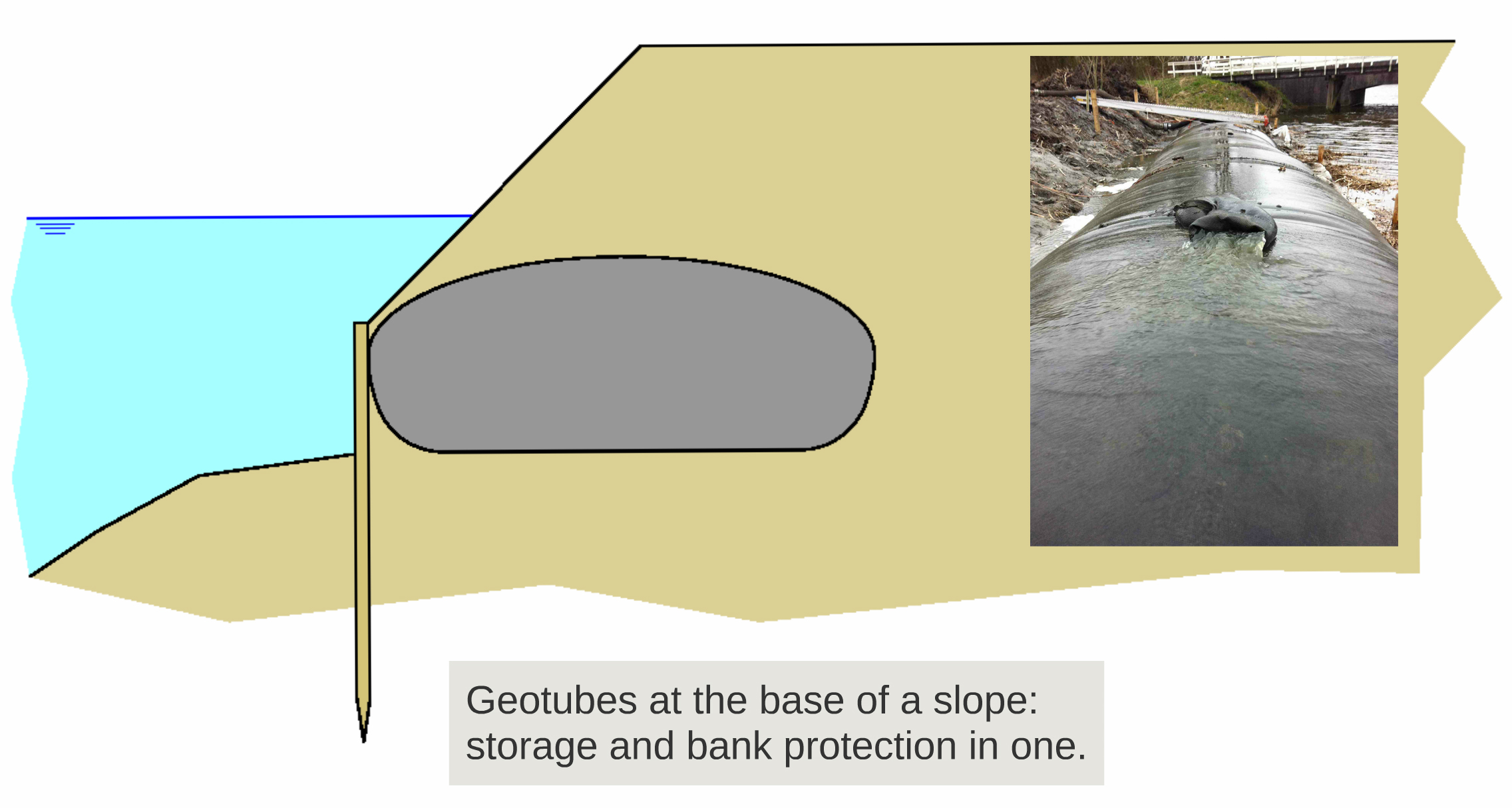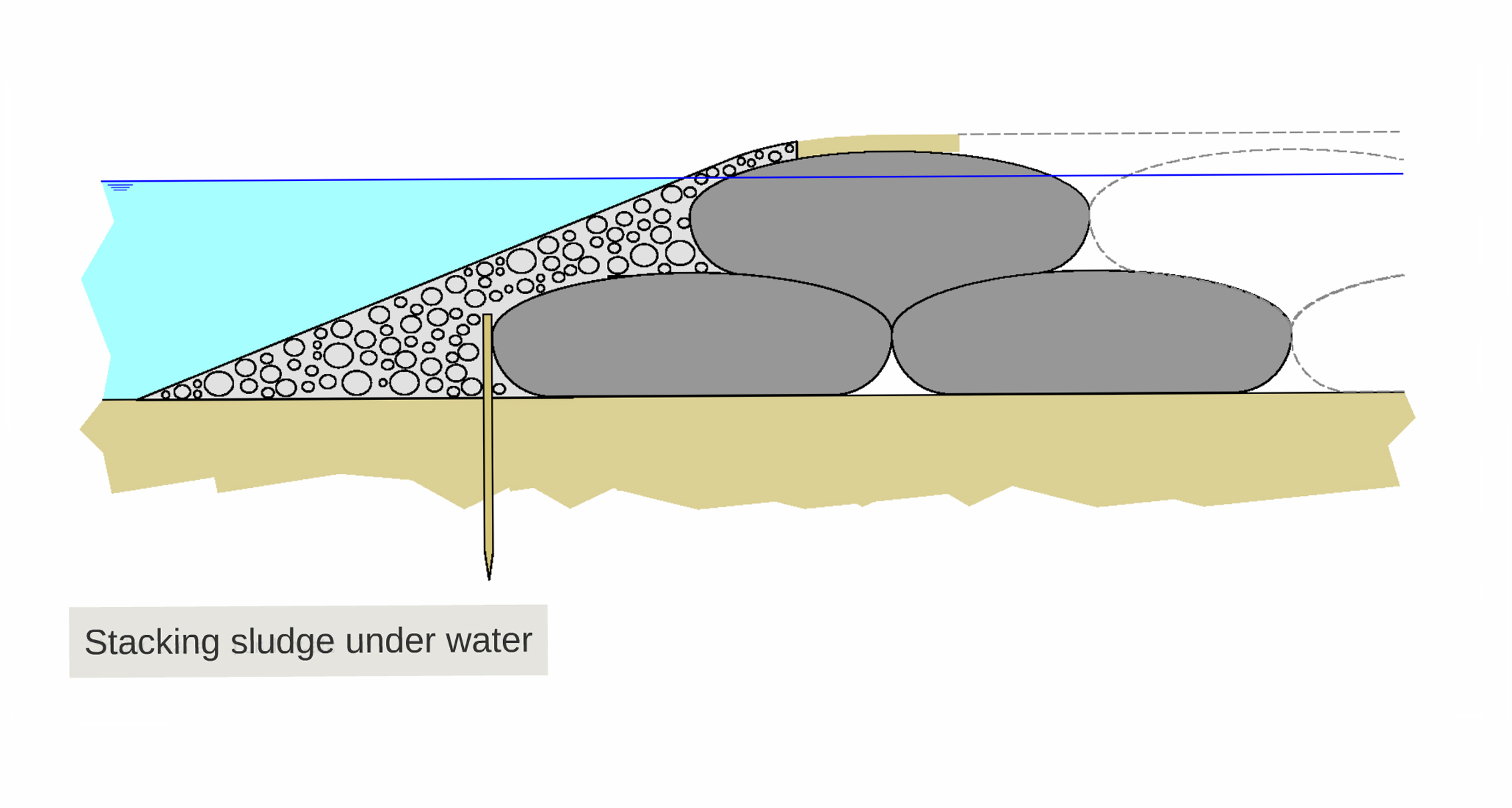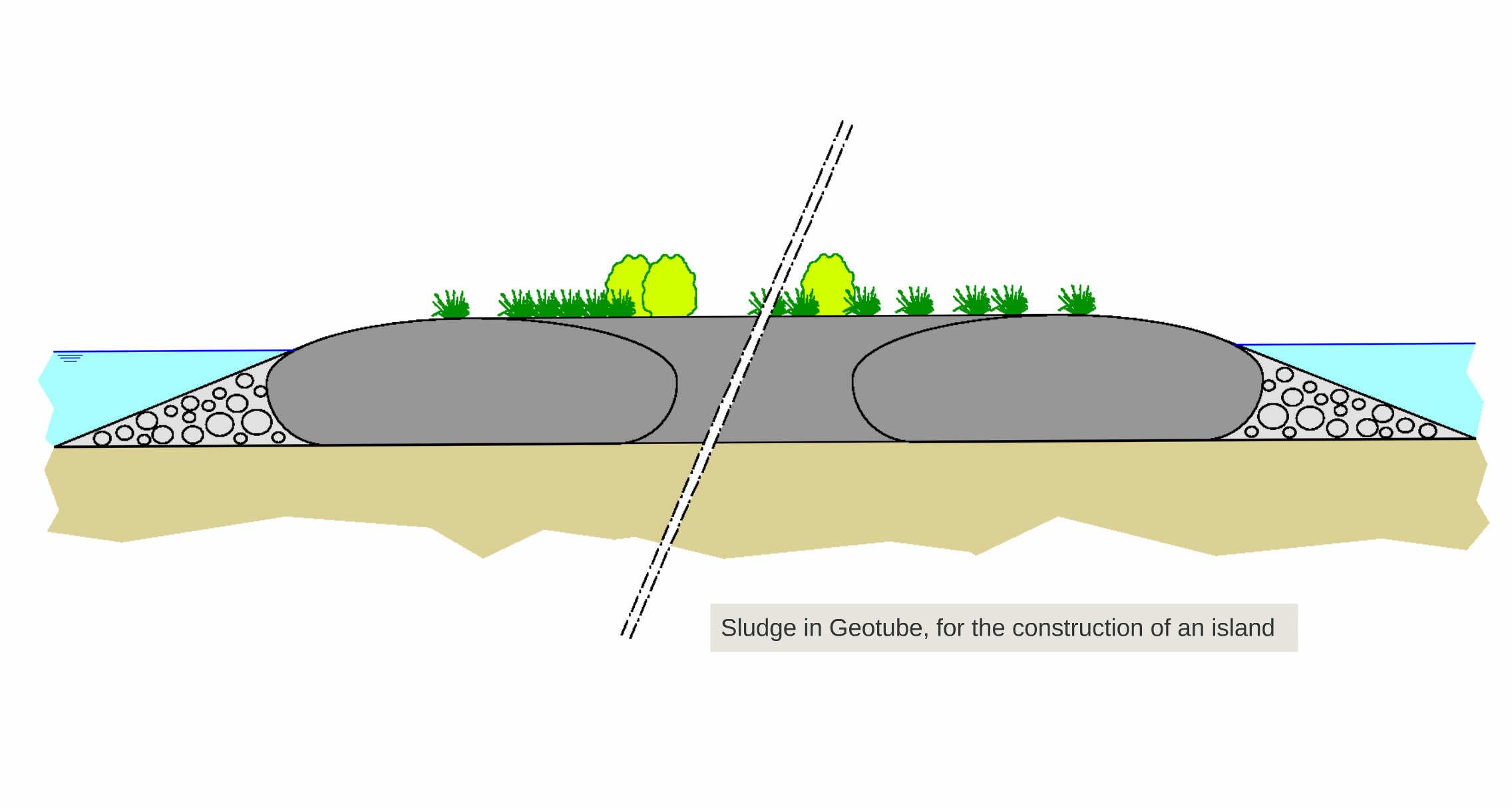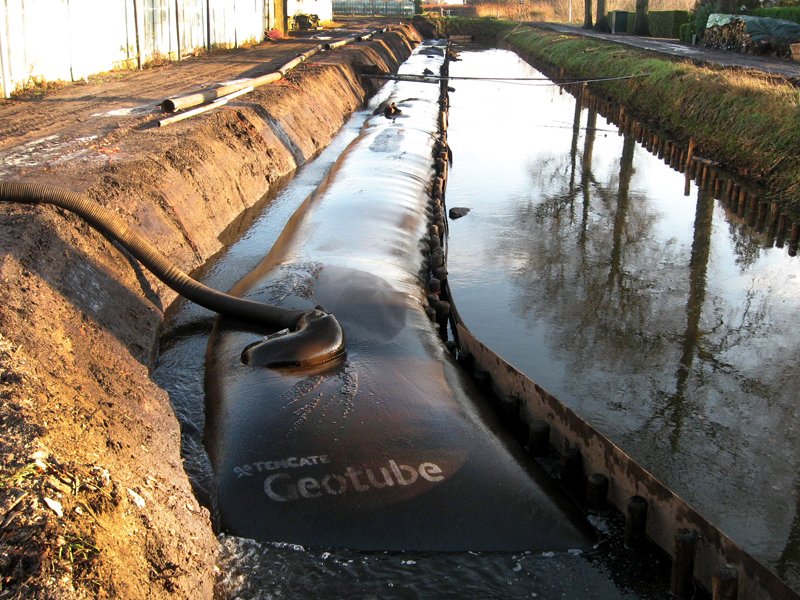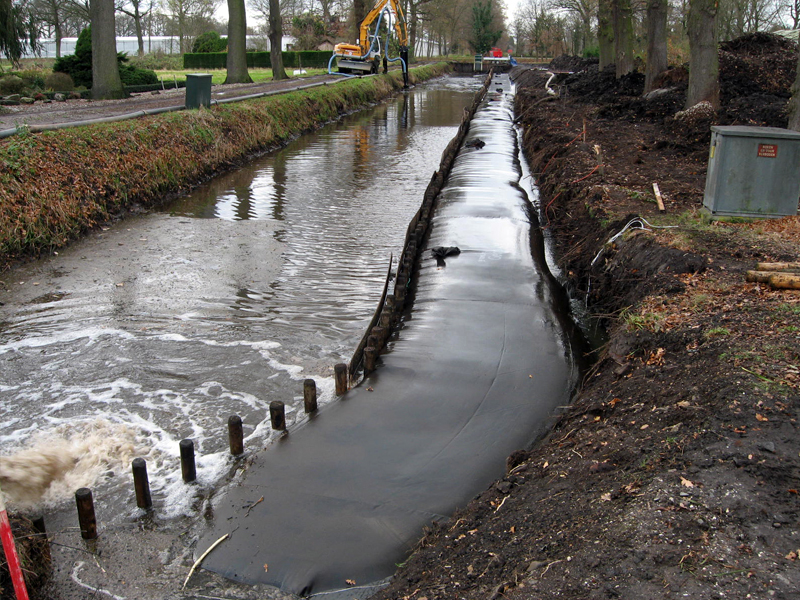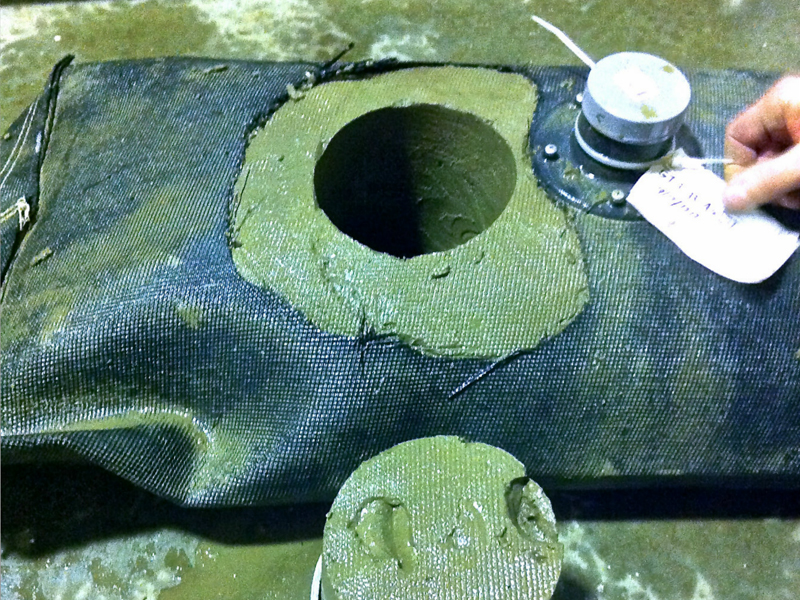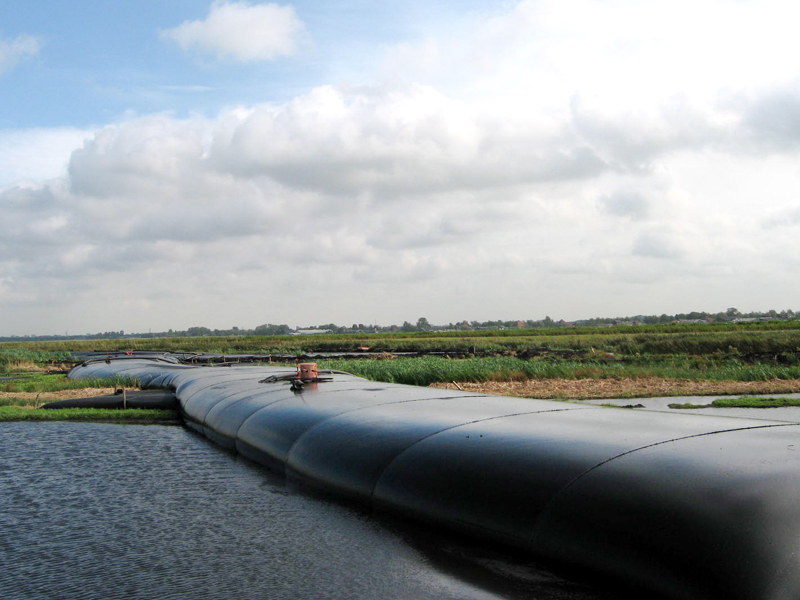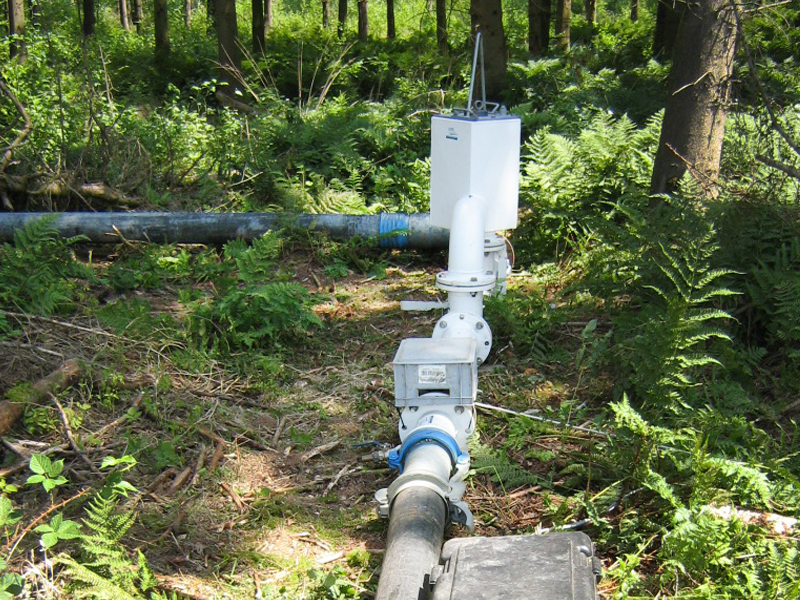Sludge processing
Whoever deals with sludge properly has an extremely useful, sustainable and robust product in their hands. Promeco has already demonstrated this for many years in practice. For example, we do this by packaging in geotextile that is stabilised if necessary. After this process, the sludge is robust enough to be used for smart, numerous applications. We optimise in an innovative manner: the dosage of the flocculation additive is completely automated, and often performed remotely.
You can process or dispose of sludge at the dewatering location, depending on the local conditions. If sludge has to be processed externally, it is done by third parties. If sludge can be processed on site, we ensure that this is possible using the Geotube®. So sludge is, in fact, a waste product, that is suddenly easy to recycle.
Useful applications
A selection of our experiences: what has the sludge been used for so far?
- Environmentally-friendly embankments (bank protection)
- Underwater storage (for example, an island for nature development)
- Wave breakers
- Storage
- Narrowing of a waterway
- Widening of embankments
In practice:
Innovation: always evolving
Promeco continuously innovates, including in relation to the processing of sludge. For more information, check out our Innovation Lab page.
Our strength: we understand sludge
There are numerous types of sludge. The right information and accurate calculations result in an optimal dewatering process, with flocculants. For example, you must not add too much or too little flocculation additive. Promeco has spearheaded optimal flocculation for many years: this is where our experience is evident. This enables effective and efficient dewatering to be performed after this process. Flocculation is highly automated, so that we can minimize fuel consumption as much as possible. Our Polymer Production and Dosage System (PPDS) immediately reacts to changes in the composition of what is flowing through the dredging pipes. We detect organic as well as inorganic material. We often use telemetry to make adjustments remotely.
Dewatering sludge with the help of geotextile containers, such as the Geotube®: an innovative application that has many benefits when compared to systems such as the belt press and the chamber filter press. Geotextile is sustainable, resistant to pollution, easily scalable and economical (especially when you use a Geotube® to give the sludge a second life in another application). For example, as a result of large-scale experimentation in our Innovation Lab, we recently succeeded in stabilising the sludge so that it could support a 40-ton vehicle. Geotextile is easy to use, as long as the process-based sludge pre-treatment is performed correctly. Thus, by continuously measuring the appropriate parameters of the sludge and automatically adjusting the dosing. The return water released during the dewatering meets the requirements of the competent authority. The percentage of suspended solids per litre is kept to an unprecedented minimum due to optimal dosing with the PPDS.

